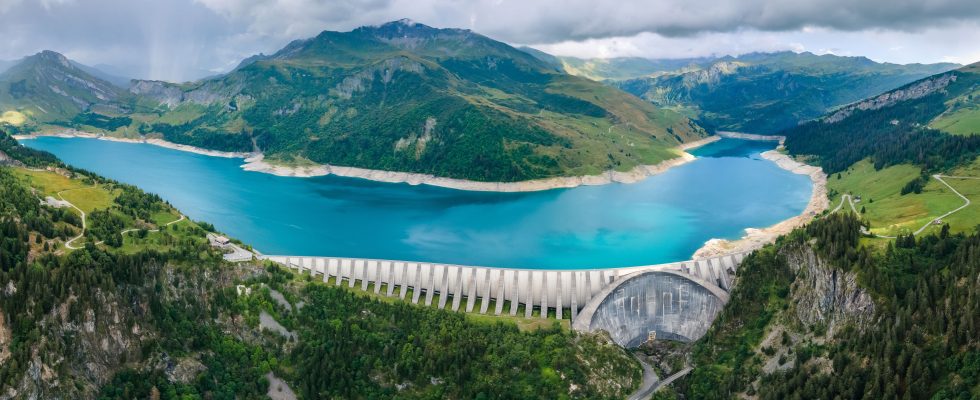She’s the good student. Perhaps too much, because often overshadowed by the heated debates on nuclear, solar or wind power. “The sector is discreet”, agrees Jean-Charles Galland, president of the hydroelectricity commission of the union of renewable energies. With its old dams, which can be more than a century old, hydroelectric power is a pillar of the French mix. It provides nearly 12% of the country’s production, the leading source of renewable energy. And has a definite advantage over wind and solar: it is not intermittent. The stored water can be turbined on demand to ensure the balance of the network.
Hydroelectricity is so embedded in the landscape that you almost forget that it is also under pressure from climate change. High temperatures and low rainfall: in 2022, “with 49.6 TWh, hydropower production is down 20% compared to the 2014-2019 average”, indicates RTE in its latest annual electricity report. What to raise concerns? “We did not note any major difficulties apart from a different distribution of precipitation”, reassures Anne Penalba. The vice-president of the France Hydro Electricity union recalls that “hydro models are made over the long term. She thus ensures that the “drop in production over ten or fifteen years is not significant”.
For players in the sector, these episodes of drought above all reveal the importance of the sector. “The year 2022 will have illustrated the interest of large storage facilities for all uses”, retains Jean-Charles Galland. Huge dams and small reservoirs have made it possible, during critical periods in summer, to release water to support low water levels, guarantee minimum volumes for agriculture or for the abstraction of drinking water. “Their reserves are not a cause for concern at the moment,” he adds.
The boom for hydropower slowed down
The sector even believes that it has development potential. This “untapped deposit is equivalent to 20% of production, around 12 TWh per year”, assesses Xavier Casiot, president of France Hydro Electricity. Two levers are put forward: increasing the power of existing power plants and building new ones. “The sustainable nature of the facilities is well established, he argues. And this volume would make it possible to do without the coal-fired power stations that we have restarted.”
All are campaigning for the multiplication of energy transfer stations by pumping (Step) which operate with two basins in a closed circuit: at the time of peak consumption, the water in the reservoir upstream is turbined to produce electricity; during dips, water from the downstream basin is pumped to recharge the upper reservoir. “We must build Steps that have the capacity to support the network over several days. They are part of the ecological transition”, defends Bernard Tardieu, vice-president of the energy pole of the Academy of technologies. But regulations and the current economic model are hampering their development. “We are constrained by the levels of aid”, recognizes Jean-Charles Galland, who hopes for the imminent emergence of a financial device.
A dispute with Brussels is also hampering the growth of the sector. France, twice (2015 and 2018), has been given formal notice by the European Commission to open up the operating concessions of its expired dams to competition – which it refuses. “Industrialists are ready to get started but are afraid, observes Bernard Tardieu. EDF is traumatized by the fear of losing concessions. As long as there is a threat, no one will move. The system is blocked.”
